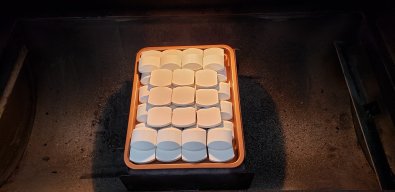so things have been working relatively well with the pit boss probe,,, I unfortunately don't have the specifics on the internal construction of the PB probe wether it's platinum or copper or nickel,,, but it is clearly out performing the original RecTec probe...
Next up for testing is the Savannah Stoker probe,,,
https://www.savannahstoker.com/products/grill-temperature-sensor
it is a platinum RTD,,, all the specs are on their site,,,
I work with a number of different types of RTD probes at work and are designed for an industrial setting in harsh environments,,, the probes that are in these grills are simply stripped down versions of simular 2 wire probes,,, they are simple devices that change their resistance value along an assumed temperature range,,, accuracy is determined by the quality of the material used in it's construction,,, and the quality of the device and the programming in the device... I am somewhat convinced the device/controller is a quality device,,, I am very suspect on the quality of the RTD probe supplied with the grill...
Next up for testing is the Savannah Stoker probe,,,
https://www.savannahstoker.com/products/grill-temperature-sensor
it is a platinum RTD,,, all the specs are on their site,,,
I work with a number of different types of RTD probes at work and are designed for an industrial setting in harsh environments,,, the probes that are in these grills are simply stripped down versions of simular 2 wire probes,,, they are simple devices that change their resistance value along an assumed temperature range,,, accuracy is determined by the quality of the material used in it's construction,,, and the quality of the device and the programming in the device... I am somewhat convinced the device/controller is a quality device,,, I am very suspect on the quality of the RTD probe supplied with the grill...

